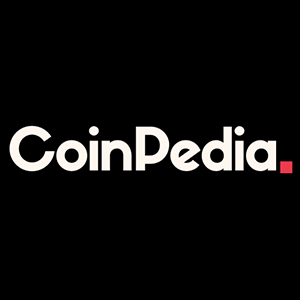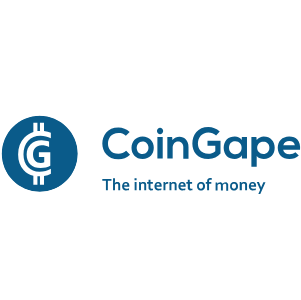

Bitfarms: Efficient, Expanding, And Nearly Debt-Free
Summary Bitfarms is still among the industry leaders in fleet efficiency from a BTC mined per EH/s standpoint. By my own estimates, I think Q3 is going to look a little rough. But I think the worst is likely over. The company is paying down debt while it grows production capacity and BTC on the balance sheet. Expansion in Paraguay is a safer bet than Argentina. With renewed enthusiasm about a potential spot Bitcoin (BTC-USD) ETF approval from the US Securities and Exchange Commission, BTC has propelled to $35k this month. Higher coin prices generally equate to improving mining economics and profitability is finally starting to look a little better. Mining Profitability (BitInfoCharts) Mining profitability surged to a two-month high on October 25th but you'd never know it by looking at the mining stocks. With the caveat that miners are still up substantially year to date, most of the BTC mining stocks have generally lagged Bitcoin's price performance in recent weeks and months: Miners vs BTC (Seeking Alpha) One such miner that has lagged recently is Bitfarms (BITF). I've covered BITF a couple of times in the past for Seeking Alpha and as fate would have it, the stock is essentially right back where it was during each of my previous buy calls. Given the recent run in Bitcoin, I'd like to provide readers with some additional thoughts on Bitfarms and give my expectations for the company's upcoming earnings report on November 7th . Production & Efficiency For the month of September, Bitfarms mined 411 BTC on 6.1 EH/s. This followed 383 BTC mined in August and 378 BTC in July. Taking the company's BTC haul and dividing it by the EH/s can provide a meaningful efficiency measurement that allows for a fairly decent apples-to-apples comparison. Here's that trend as of September: Mining Efficiency (Compass Mining/Anthony Power) Most miners spent much of the summer in the 70s from a BTC per EH/s standpoint. Year to date, Bifarms has been the industry standout. This is a testament to the company's fleet efficiency and the fact that Bitfarms has been at or near the top of the rankings in this metric all year is a great sign. Like most of the other miners, Bitfarms takes a hybrid approach to balance sheet management as it sells some of its monthly production to cover costs and keeps the rest: BTC Treasuries December 2022 September 2023 Change Change % Riot Platforms ( RIOT ) 6,952 7,327 375 5.39% Marathon Digital ( MARA ) 12,232 13,726 1,494 12.21% Hut 8 Mining ( HUT ) 9,086 9,366 280 3.08% Bitfarms 405 703 298 73.58% CleanSpark ( CLSK ) 228 2,240 2,012 882.46% Cipher Mining ( CIFR ) 394 553 159 40.36% Source: Company filings Year to date, the company has grown BTC liquidity by 298 coins. Nominally, there have been other miners that have grown stacks to a larger degree but Bifarms has been able to grow its holdings by almost 74% year to date even while aggressively paying down debt in recent quarters. Balance Sheet & Q3 Expectations It's been a rough Crypto Winter for Bitfarms. After amassing over 6,000 BTC in treasury in May 2022, each crypto collapse saw more BTC leaving the company's control. At one point in 2022, Bitfarms had over $142 million in current liabilities. However, the company is now in a much better position than it was at the beginning of the year. September Update (Bitfarms) As of the end of September, Bitfarms has just $9.9 million in debt remaining, along with $46 million in cash. The Q3 earnings report will show $19 million in BTC but adjusting the September holdings for current pricing, that bitcoin stash is now worth closer to $24 million. Importantly, Bitfarms' debt will mature by the end of February which will help alleviate the cash flow hit following the block reward reduction in April. Looking at upcoming earnings, I think it's a fair bet that the company will have another sizeable net loss in Q3. July, August, and September were disappointing months for Bitcoin and Bitfarms' revenue from BTC sales during those months came in at $28.4 million per the company's monthly production updates: Q3-22 Q4-22 Q1-23 Q2-23 Q3-23 Global Network hash 213 255 290 358 400* Avg EH/s 3.9 4.4 4.7 5.1 5.7 Revenue $33.2 $27.0 $30.1 $35.5 $28.4 Cost of Revenue $37.2 $39.1 $38.4 $41.5 $44.6* Total Opex $10.3 $12.0 $8.4 $12.2 $12.2* Operating Income -$14.3 -$24.1 -$16.7 -$18.2 -$28.4* Sources: Seeking Alpha, Bitfarms, *author's estimate In the table above, I'm using 400 as the global network hash rate, I'm carrying over opex from Q2 and assuming similar energy expense and depreciation ratios to the first half of the year. Based on those assumptions, I get $44.6 million in cost of revenue and -$28.4 million in operating income. Here's the good news, higher prices fix this and that's exactly what we have in October. At $34k BTC, the 1,018 bitcoin that Bitfarms sold in Q3 would have generated $34.6 million in revenue and the 154 BTC that were kept in treasury equate to another $5.2 million. That still isn't enough to make Bitfarms gross profitable but it's much closer. And if you're of the opinion, as I am, that Bitcoin will surpass $100k per coin in the next bull run, then Bitfarms will be profitable even adjusting for the halving. But again, these are estimates and forecasts that may not come to fruition. This is a high-risk space and these stocks generally have a poor history as long-term investments. Geographic Mix & Expansion Plans The company has a fairly well-diversified production footprint that spreads its 240 MW out over a total of eleven farms located in four different countries. At the end of September, Bitfarms was actively hashing in Canada, Paraguay, Argentina, and the United States. September Update (Bitfarms) Something that has complicated Bitfarms' expansion plans has been the volatile financial and political environment in Argentina. The company had previously planned to expand beyond a single 50 MW warehouse in that country but has since decided to grow operations in Paraguay instead. Bitfarms leadership has noted how Argentina became a more difficult jurisdiction to do business in following changes to direct importation last year. Looking ahead, the potential instability from a change in government is also something Bitfarms leadership has been mindful of. October 22 Results (Reuters) The general election that took place on October 22nd will be followed by a run-off vote in November between Sergio Massa and Javier Milei. On the Q2 conference call, Bitfarms leadership touched on the election briefly but didn't overtly disclose a candidate's preference. However, there was an acknowledgement that financial policies differ between the candidates and Argentina has a substantially negative dollar reserve balance: the country has to address this, that can introduce uncertainties similar to what we saw and the pain that we experienced obviously last year. So we want to make sure that we're looking at great opportunities Reading between the lines, it appears as though pro-Bitcoin anarcho-capitalist independent Javier Milei could be the desired candidate from the perspective of Bitfarms. But in any case, expanding in Argentina is seemingly a bigger gamble than Paraguay at this point in time and the company purchased 150 MW in hydropower PPAs between Paso Pe and Yguazu in July. September Update (Bitfarms) Official guidance is for 7.0 EH/s by the end of March 2024 but President and CEO Geoff Morphy left the door open for 7.8 EH/s possibly early next year if additional growth prospects fall into place. In August, Bitfarms purchased just under 3k new rigs with cash and miner credits. Risks I think just about every serious 'bitcoiner' is aware at this point, but I'll mention once again; that we have a block reward halving coming in April. That event will essentially cut revenue from mining in half overnight. This a major concern for every public Bitcoin miner and may position these companies as better trading vehicles than actual investments for the time being. Like most miners, dilution is a concern for Bifarms. The company has raised at least $48 million through its ATM over the last two quarters. Furthermore, transaction fees as a percentage of the block reward haven't lived up to the potential that we saw back in May with the emergence of Ordinals and BRC-20 token swaps. Until transaction fees become a more reliable driver of miner revenue, halvings will be a perpetual "reset" of the mining market that will almost certainly result in consolidation and exits as weak miners turn off. More specifically to Bitfarms, I think jurisdiction risk in Argentina is something to consider since the country is home to 21% of the company's BTC production. It's difficult to forecast how the upcoming election might play out but the country is dealing with astronomical inflation and any social unrest could ultimately lead to political risk. Summary As we approach the halving, I'm personally planning to hold a small list of about five BTC mining stocks that I like above the two dozen or so names in the sector. Bitfarms is one of the stocks on that list. At a time when we've seen at least a half dozen BTC mining names pivot to "AI" or HPC services to some degree, I think there is something to be said about the companies that are sticking with core competencies and entering the halving with sound balance sheets. As I said in my recent Hut 8 Mining article , I think we've seen the cycle bottom for BTC and I believe miner shares will rally from here. I see BITF outperforming.






